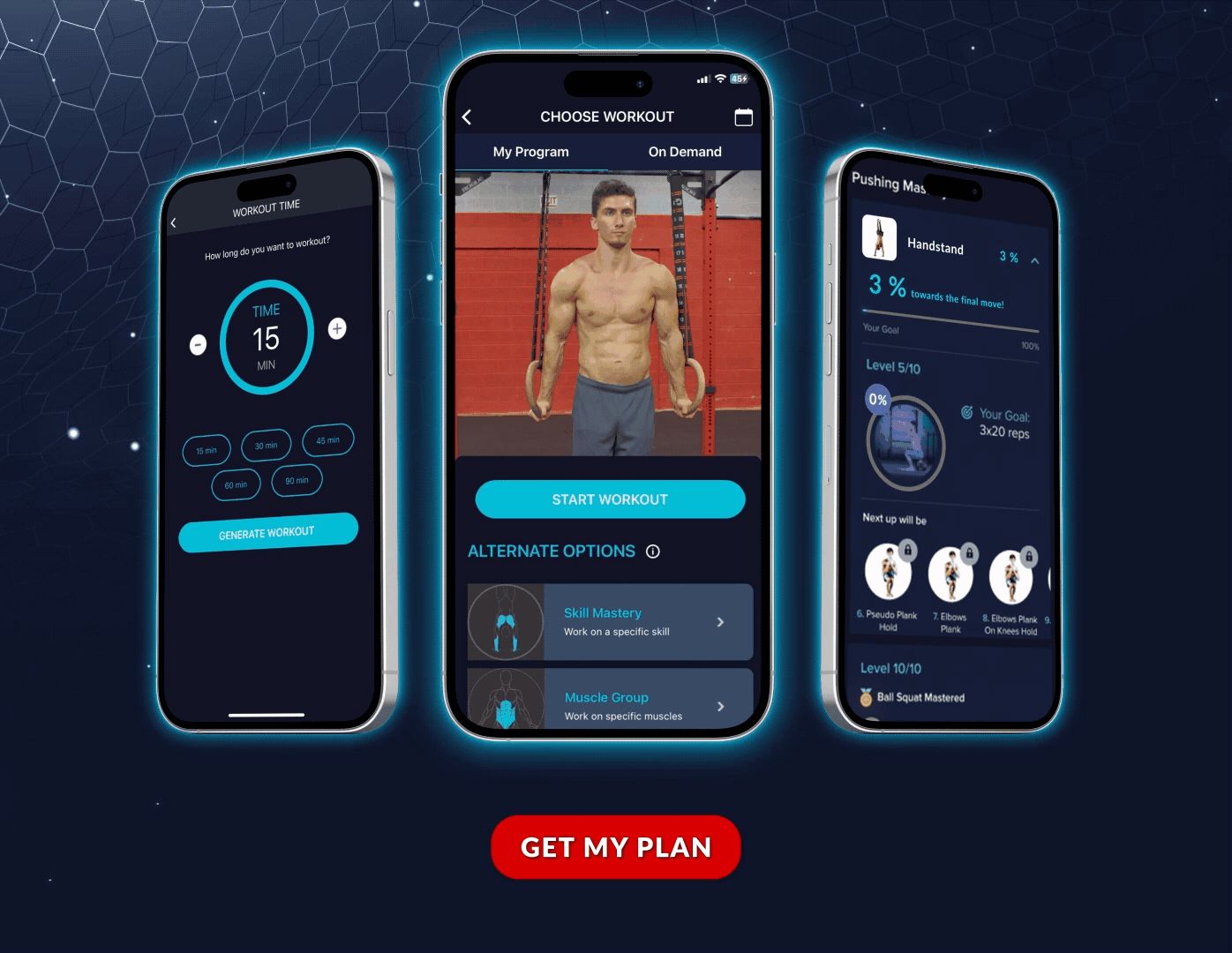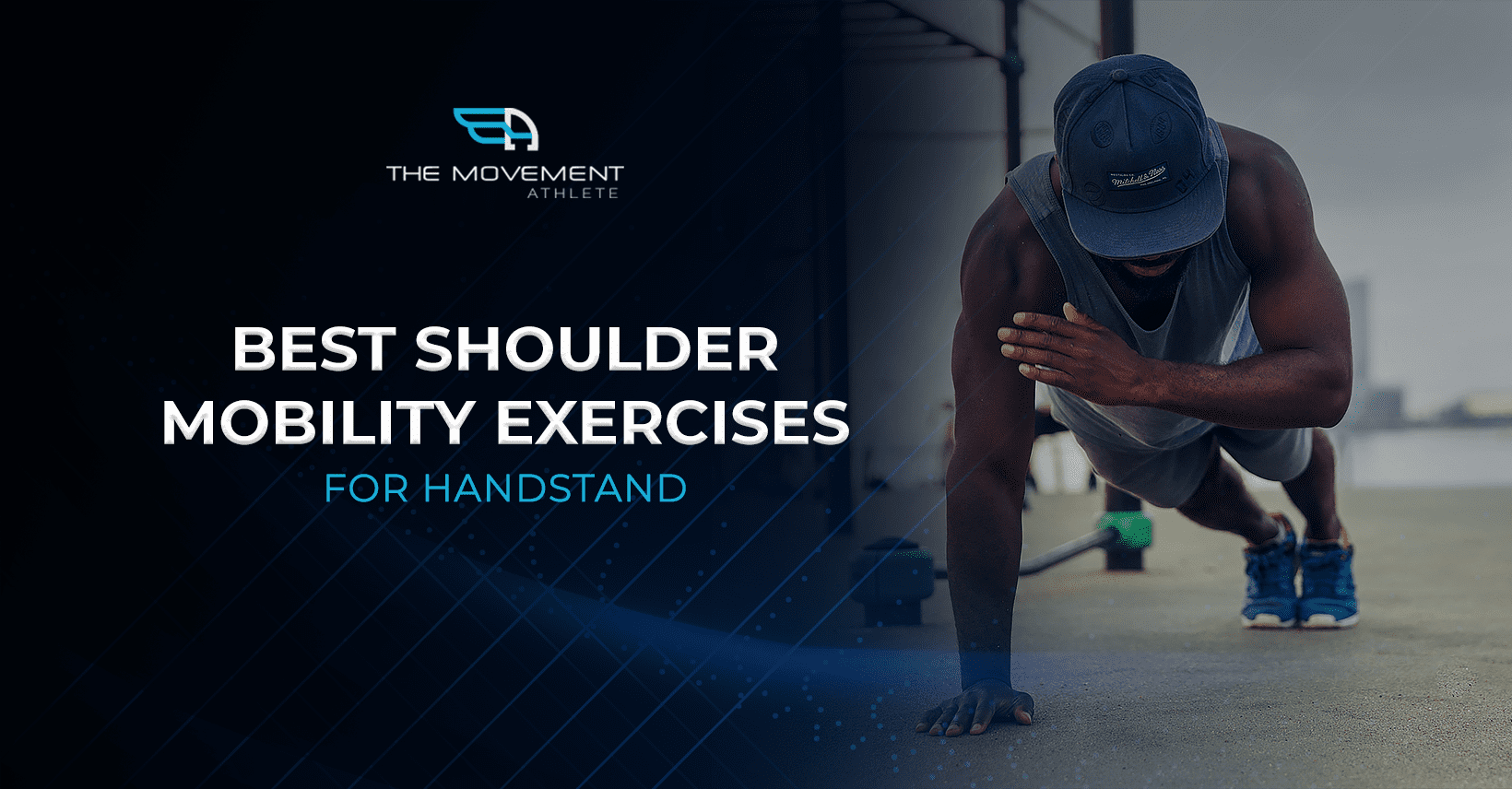

📖 Read Time: 5 Minutes
🏋️ Join the tribe of Movement & Calisthenics Athletes
People just like you that are working with their own body weight to get strength, lose fat, build muscle, recover from injuries and live their best lives!
Mobility is a huge aspect in performing the straight free-standing handstand.
Of course, there is a strength component to the skill which is mostly the concern of most people, but don’t forget that mobility also plays a crucial role in perfectly executing the perfect form of a handstand.
Mobility allows your body to move in a wider range of motion with control so you don’t have to rely too much on strength and put unnecessary load on your joints. It makes your handstand more efficient than relying solely on strength. This means that you’ll be working less but at the same time doing a lot better. 💪
Plus, if you train your mobility, you’ll have a better overall quality of movement even outside our handstand journey. Not sure where to start? Take our free assessment to get a personalized training plan that includes the right mobility work for your level.
So here are the 5 best mobility exercises to improve your handstand:
🤜 Wrist Rocks
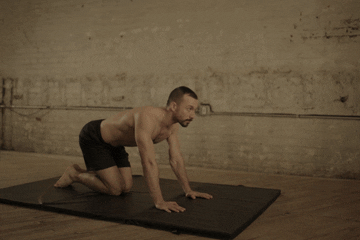
Let’s first discuss what’s going on with your wrist. Your wrist will be bearing a great amount of stress when doing a handstand as it will act as your ankles when your standing. It will also allow you to control your handstand so you won’t fall backward or forwards.
To control your wrist, you’ll need both strength and mobility which this exercise can be able to assist you. Wrist rocks mimic the force you apply on your wrist but in a controlled manner so you can ease your way to strengthen your wrists.
As a requirement, you must be able to comfortably hold a 90-degree angle with your hand and your arm.
👍How to perform:
- Begin on hands and knees. Arms straight below shoulders, wrists bent, on tops of hands.
- Keeping your back straight, rock forward. Bringing your shoulders over top of your wrists, then rock back.
- Repeat for specified repetitions.
🤜 Cow Stretch
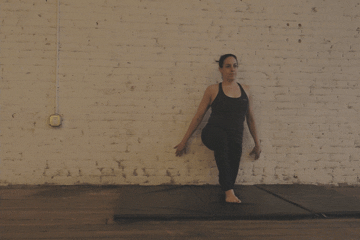
This is a commonly neglected area that needs to be addressed to be able to perform a perfectly straight handstand: the hips!
Your hips play an important role to engage the core and control your legs. Remember that your muscles are connected. If you have tight hips, you’ll have a hard time straightening your legs when you’re upside down. You also might have a hard time engaging your core resulting in arching of your lower back.
Remember that we’re aiming for a straight line handstand. We want everything straight as a ruler. 📏
With the cow stretch, you’ll get to strengthen as well as stretch your hip flexors and quadriceps.
👍How to perform:
- In a lunge position with your back to the wall, bend your left knee up so your shin and foot are against the wall.
- Scoot back so your foot touches your butt.
- The right leg should be bent at a 90-degree angle, with the right knee directly over the right ankle.
- Let your arms hang straight and place your palms on the wall to help stabilize.
- Hold for a specified time.
- Switch legs.
🤜 Cat-Camel
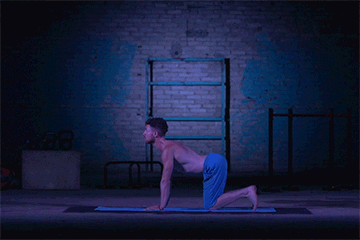
Another neglected aspect of the handstand mobility that is essential for a straight bodyline is the thoracic spine.
It’s basically your spine region attached to your rib cage that runs from your middle to upper back. Most of the time, it stiffens up due to the sitting position that most people tend to do in our daily working environment.
You can address this problem with the cat-camel exercise. This is a lateral exercise that works to stretch and strengthen muscles of the low back such as the erector spinae and abdominals, too.
When you tend to have a lower back problem after doing a handstand, this might be the issue. Your lower back compensates for the lack of thoracic extension mobility. Instead of having to extend your rib cage, your lower back arches which we don’t want for our handstand.
In addition, thoracic mobility assists in the overhead shoulder mobility which is essential in a perfect handstand form.
Not only this exercise trains you for the straight handstand, but it also improves your posture for overall better quality of life. 🌟
👍How to perform:
- Get on hands and knees with arms straight and back straight.
- Relax back as you arch and lift the head up.
- Slowly transition to rounding back out, up toward the ceiling.
- Repeat for specified repetitions.
🤜 Downward Dog
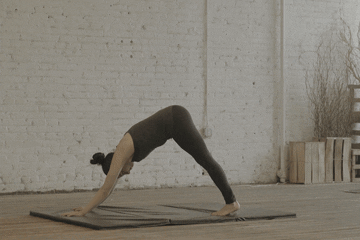
An obvious prime mover in a handstand is the shoulders. You need overhead shoulder mobility which basically means that you need to be able to raise your arms straight over your head.
Without proper shoulder mobility, you would need to rely more on your shoulder and wrist strength when performing your handstand. This is not very efficient as you’ll get tired faster and put too much strain on your shoulders and wrists.
Having open shoulders allows you to be as straight as possible in your handstand position.
With the downward dog, you get to practice opening your shoulders more as well as your chest and lats which also assist in holding you in the handstand position. It also a great way to stretch your hamstrings. For comprehensive shoulder mobility training, check out our free shoulder mobility mini-course.
👍How to perform:
- Begin in a kneeling position.
- Coming forward, place your hands out in front of you.
- Rise up off knees, straighten legs.
- Walk feet in as close to arms as possible, while keeping legs straight.
- Push through arms, head looking back towards legs and opening the chest.
- Hold for a specified time.
- Return to kneeling position.
🤜 L-stand Shrugs
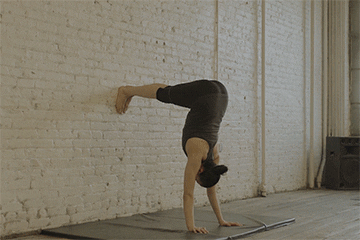
Another excellent way to acquire good mobility with your shoulders is through shoulder shrugs.
As said earlier, overhead shoulder mobility is vital for the straight-line execution of an efficient handstand. This is a perfect exercise that strengthens your shoulders while increase the range of motion you can control.
As your shoulders get better, you also get to train your thoracic spine, lats, chest, wrists, hips, and abdominals. All of these are vital to your handstand form getting better in a single exercise. You also get to practice your handstand stability up to a full handstand.
As you get better, you can push to the next level and do facing-the-wall handstand shoulder shrugs.
👍How to perform:
- To begin, stand in front of the wall with your back to it.
- Bend down placing your palms on the floor, and walk your feet up the wall until you are in a handstand position.
- Keep body tight and in a straight line.
- Legs together, and straight. Arms straight and next to ears.
- Hold position.
- When finished, lower feet back down to the floor and stand up.
These exercises can be incorporated in your warm-up or part of your core routine. It depends on your priority and goal of your training.
If you don’t want to think about how to incorporate these amazing exercises to your routine, download our complete handstand training guide for detailed progressions and structured programming.
See you upside down! 🙃
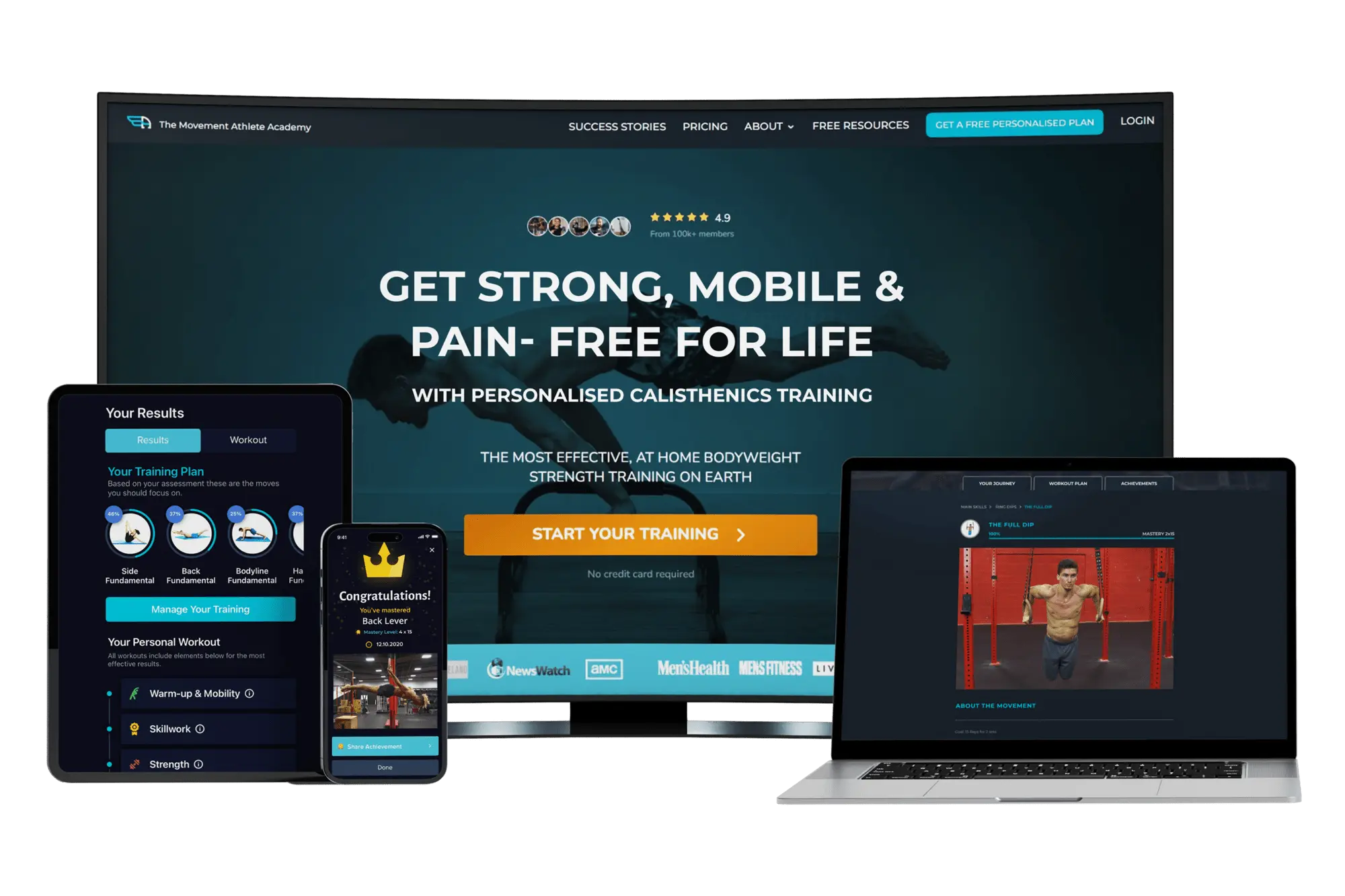
Related Articles You’ll Love:
Ready to get started?
Get your free personalized training plan now
